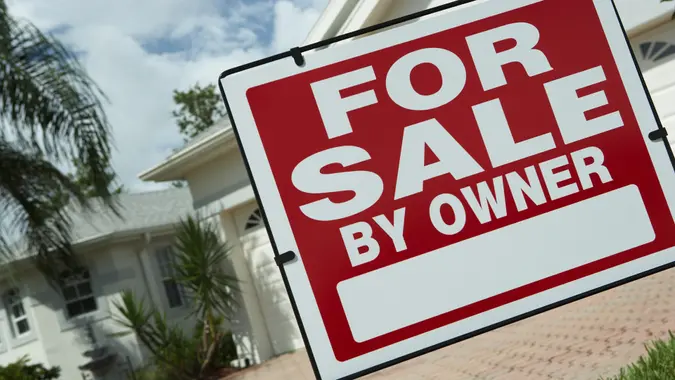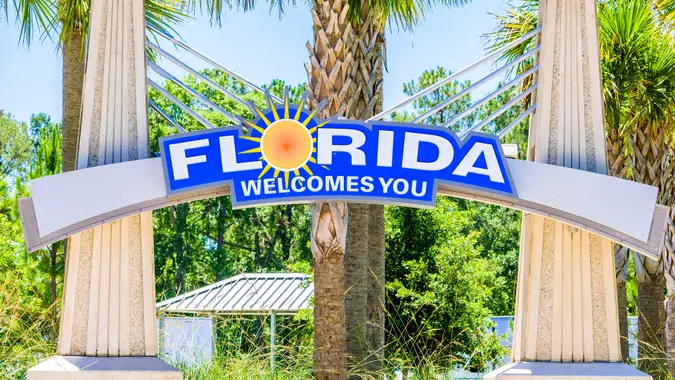Municipal Bonds Basics: Learn What They Are and How They Work

Commitment to Our Readers
GOBankingRates' editorial team is committed to bringing you unbiased reviews and information. We use data-driven methodologies to evaluate financial products and services - our reviews and ratings are not influenced by advertisers. You can read more about our editorial guidelines and our products and services review methodology.

20 Years
Helping You Live Richer

Reviewed
by Experts

Trusted by
Millions of Readers
Bonds can be an excellent way to diversify your investment portfolio. Municipal bonds, which are issued by local governments, have several key benefits, including low volatility and exemption from certain taxation. If you’re considering investing in municipal bonds, it’s important to understand how they work, their key benefits, and some risks to consider.
What Are Municipal Bonds?
Municipal bonds, also known as “muni bonds” or simply “munis,” are loans investors make to local governments. They’re a popular type of debt security that state and local governments, including cities and counties, use when they need to raise money to finance projects.
Municipal bonds operate similarly to other bonds, but they have some distinct advantages, including exemption from federal income taxes (and, in some cases, state and local taxes). This feature makes them a popular investment for high-income earners who are seeking to shield some of their income from taxation.
More on Bonds: How To Choose the Best Bonds
How Municipal Bonds Work
Municipal bonds often help pay for capital investments like building roads, bridges, airports, water treatment facilities, and hospitals to benefit the public. By funding projects through municipal bonds, agencies can distribute the cost of the projects across several generations.
Municipal bonds work just like other types of bonds. When you purchase a municipal bond, you’re essentially lending money to the government agency that issued it. You’ll receive regular interest payments — usually semi-annually — throughout the bond’s term.
When the bond reaches maturity, you’ll receive the return of your original investment, known as the bond’s principal. Short-term municipal bonds have terms ranging from one to three years. Meanwhile, long-term bonds have terms of between 10 and 30 years.
There are two primary types of municipal bonds: general obligation (GO) bonds and revenue bonds. While both types of bonds go to fund public projects, they differ in terms of how they’re repaid.
Types of Municipal Bonds
Although there are many different types of municipal bonds, the two most common are general obligation bonds and revenue bonds. The primary difference between these two categories is the funding source used by the bond issuer to pay interest payments and the principal owed to the bondholder.
General obligation bonds are backed by the credit of the issuing jurisdiction rather than the revenue from a specific project. That means the government entity can pay interest payments and the principal from its budget. It can also subject the bondholder to added risk because the bondholder cannot be paid if the issuing agency doesn’t receive the revenue it expects.
Revenue bonds are supported by specific projects, such as toll bridges and highways. Money collected from tolls or subsidies from the federal government covers the cost of interest and principal payments to bondholders. Some revenue bonds are funded through taxes like property taxes and hotel occupancy taxes.
In addition to these two primary bond types, municipal bonds can also differ based on how they’re structured. Here are some other categories of municipal bonds you might run into.
- Conduit bonds are a type of revenue bond. A third party, such as a nonprofit agency, agrees to take responsibility for paying the interest and principal.
- Insured bonds are backed by commercial insurance companies that agree to pay whatever is due to bondholders if the municipality defaults on the agreement.
- Market discount bonds are bonds sold in a secondary market at a price lower than face value.
- Municipal notes are short-term bonds that usually mature in one year or less. These bonds give government agencies access to money they need while they wait for revenue to build up.
- Original issue discount bonds are sold at a price less than their face value. Interest earned on these bonds is tax-exempt and not subject to capital gains taxes.
- Pre-refunded bonds have the backing of Treasury securities kept in an escrow account that generate the cash needed to pay the interest and principal of the bond.
- Taxable municipal bonds are issued for non-subsidized federal government projects, like building a stadium, that don’t quite benefit the public as much as a bridge might, for example.
Benefits of Investing in Municipal Bonds
Municipal bonds can offer some advantages to you as an investor. Here are some benefits:
Tax-free income
One of the key benefits of municipal bonds is the interest you earn isn’t subject to federal income taxes. The interest may also be exempt from state and local taxes, but only if you live in the state where the bond was issued.
This tax-free income makes municipal bonds a popular choice among high earners. For example, suppose someone in the 32% tax bracket invests $100,000 in municipal bonds that pay 5% interest. Those bonds generate $5,000 of income per year, and as long as the bondholder lives in the state where the bond was issued, they won’t pay any income taxes.
On the other hand, if the investor had earned the same amount in interest from corporate or other non-tax-exempt bonds, they would be on the hook for $1,600 per year in additional income taxes.
Low risk
Municipal bonds generally have lower risks than corporate bonds and especially lower risk than stocks. The stock market is subject to more fluctuation than bonds, thanks to bonds’ fixed interest rates. Additionally, though corporate bonds can still be relatively low-risk, they have a higher chance of default than municipal bonds, in most cases, since they aren’t backed by tax dollars.
Of course, that doesn’t mean municipal bonds are completely without risk. However, you’re less likely to lose your initial investment.
Community impact
Municipal bonds are often used to fund public projects, including schools, hospitals, roads and bridges, and more. When you invest in them, you can feel good about your money going to help your local community.
Risks and Considerations of Municipal Bonds
While there are some definite benefits to investing in municipal bonds, there are also some risks and downsides to consider:
- Interest rate risk: Bonds have fixed interest rates. If bond interest rates rise, yours could lose value because it will have a low rate compared to others on the market. If you hope to resell your bond, you could either have a difficult time reselling or have to sell for less than you bought it.
- Credit risk: The risk of any bond is based on the creditworthiness of its issuer. As bonds are loans, there is always the risk that the issuer could default. Ratings agencies like Moody’s rate bonds and can help you assess their risk.
- Liquidity risk: Your ability to resell your bond is dependent on someone else being willing to buy it. If you’re unable to resell your bond when you want to, you could face liquidity risk, where you’re unable to turn your bonds into cash if you need to.
How to Invest in Municipal Bonds
Investors interested in municipal bonds might wonder where to buy them. You can go through a broker who can also review your financial goals and discuss an investment strategy with you.
Another way to invest in bonds is by buying them individually through a self-managed brokerage account. If you don’t already have one, you can see our list of the best brokerage accounts and online trading platforms.
Finally, you can invest in bonds indirectly through municipal bond mutual funds or exchange-traded funds. The benefit of this option is you have a diversified bond portfolio rather than picking and choosing individual bonds.
Check Out: Ways To Invest Without the Stock Market
Municipal Bond Yields
Municipal bond yields are generally lower than taxable bonds, such as corporate bonds, especially lower-grade bonds. Municipal bonds also tend to have lower yields than Treasury bonds. Similar to municipal bonds, Treasury bond interest is exempt from state and local taxes. However, you’ll still have to pay federal income taxes on those dollars.
Just because municipal bonds have lower yields doesn’t necessarily mean you earn less overall. Because you don’t pay federal taxes on the interest (and in many cases, don’t pay state taxes), you could still end up with a higher after-tax yield on a municipal bond. When you’re comparing bonds, it’s important to compare each one’s after-tax yield to get an accurate picture of how much you actually stand to earn.
See Next: Safe Investments With the Highest Returns
More From GOBankingRates
- 20 Investments That Are Recession-Proof
- Steps To Open a TD Bank Account
- Best Money Market Accounts of 2020
- 29 Stocks That Every Retiree Should Own
This article has been updated with additional reporting since its original publication.
 Written by
Written by  Edited by
Edited by 

























